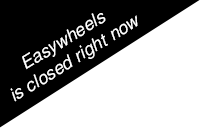






 and more ...
and more ...

The size of your tyre affects your car in a number of ways and if you fit your car with the wrong sized tyres then a lot of things can happen. First and foremost, your car’s performance will drop significantly and tasks that you would normally expect it to achieve can become quite difficult, meaning that you won’t be getting the best out of your car. Even more significant than this is the risk that it introduces to your safety, because it can be the cause of a lot of road accidents which can result in a serious injury or even death – you should never underestimate the value of properly sized tyres.
There are many ways to find out the size of your tyres, whether you contact a local dealer, a manufacturer or just simply refer to your car manual. The most logical place to start though is the actual tyre itself, as the reading will be written on the side of your tyre and they are marked in accordance to the International Standards Organisation (ISO), so it gives you a simple and easy format to follow. Failing that, the specifications will be written on the door panel, or if you are online then the information can be easily provided from some useful websites.
What the Figures Say
There are a series of numbers and letters that represent five different areas of the tyre which are all equally important to the effectiveness of your tyres. They are compiled of:
· Tyre width: the first three numbers represent the width of the tyre, which is measured in millimetres and sizes range from 135 to 355 and is usually followed by a dash.
· Tyre profile: this displays the width of the tyre in association of the whole wheel in a percentage. For example it could read 40% of a tyre that’s width is 100mm.
· Wheel size: this is the size of the wheel which the tyre fits on and is measured in inches and is usually preceded with the letter R.
· Load index: this displays the maximum load or weight that a tyre can support, with more being able to be supported the higher the number gets.
· Speed index: corresponding to the tyres maximum speed. It is prohibited to fit tyres with a speed index below that recommended by the manufacturer of your vehicle.
